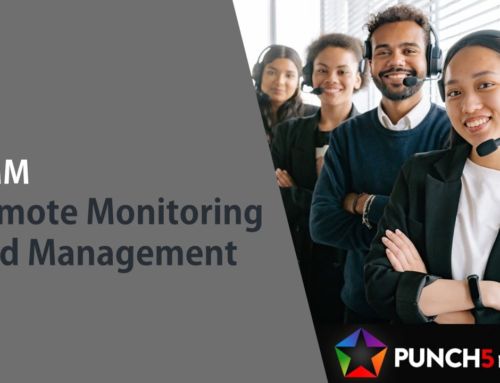Privileged Access Management (PAM)
In the IT business world, Privileged Access Management (PAM) is a critical security measure to protect sensitive data. PAM solutions help businesses control, monitor and audit the actions of privileged users. By doing so, PAM can prevent data breaches and other security incidents.
As businesses become increasingly digitized, the amount of sensitive data being stored and transmitted electronically continues to grow. This presents a prime target for cyber criminals who are constantly devising new ways to gain access to this data.
In this article, I will explain what PAM is and how it works to help protect your critical information.
Table of Contents
What is Privileged Access Management?

Privileged Access Management (PAM) is a critical security measure that helps businesses protect sensitive data by granting authorized users access to the resources they need, while preventing unauthorized users from accessing those same resources.
PAM involves a variety of technologies and processes designed to securely manage and control privileged user accounts, including password management systems, network monitoring tools, and identity management systems.
These tools work together to help businesses secure their data by providing a high level of control over who has access to what resources.
PAM solutions can be deployed in on-premise, cloud, or hybrid environments.
When implemented correctly, PAM can help businesses improve their overall security posture by reducing the risk of data breaches and insider threats.
What are Privileges in IT?
In the IT industry, privileges are special permissions or access rights that are granted to specific users or groups of users. These privileges can be used to give individuals or teams access to sensitive data and systems, and help ensure that only authorized users have access to critical resources.
Privileges are an important tool for managing security in the IT industry, and are often used to control access to sensitive data and systems.
There are two types of privileges:
- User privileges: These privileges are assigned to individual users and give them access to specific resources.
- Group privileges: These privileges are assigned to groups of users and give them access to specific resources.
Privileges themselves can be managed using a variety of tools and technologies, including password management systems, identity management systems, and network monitoring tools.
What are Privileged Accounts?
In the context of PAM, privileged accounts are user accounts that grant elevated access to resources or systems. These accounts may include administrative privileges, root access, or other special permissions necessary to perform certain functions on a system.
Because they give users access to sensitive data and systems, privileged accounts need to be carefully managed and controlled in order to prevent unauthorized access.
Privileged accounts play a critical role in PAM, and must be carefully managed to help ensure the security of sensitive data and systems.
A PAM best practice is to only use administrator accounts when absolutely necessary and for the shortest period of time. These administrative accounts have more powers and, as a result, are more risky if misused or abused than non-administrative user accounts.
Ultimately, the goal of PAM is to protect critical data from unauthorized access or misuse by privileged users. By implementing strong controls over privileged accounts, businesses can help reduce the risk of data breaches and insider threats.
How Does PAM Work?
PAM solutions typically work by authenticating users and authorizing their access to specific resources. This process usually involves the following steps:
- User identification: The user is identified and authenticated using a variety of factors, such as username and password, biometrics, or security tokens.
- User authorization: Once the user is authenticated, the PAM solution will check to see if the user has the privileges needed to access the requested resources.
- Resource access: If the user is authorized, they will be given access to the requested resources.
- Audit and compliance: PAM solutions can also help businesses meet compliance requirements by providing auditing and reporting features that track privileged user activity.
PAM solutions can be deployed in on-premise, cloud, or hybrid environments.
- On-premise PAM solutions are installed and managed locally on a company’s servers.
- Cloud-based PAM solutions are hosted off-site by a third-party provider and accessed via the internet.
- Hybrid PAM solutions are a combination of on-premise and cloud-based solutions.
PAM vs. IAM
Privileged Access Management (PAM) and Identity Access Management (IAM) are two closely related security disciplines that are often confused with one another.
While both PAM and IAM involve the management of users and their access to resources, there are some key differences between the two.
IAM is focused on managing user identities, whereas PAM focuses on managing the privileges of those users.
PAM also differs from IAM in its focus on privileged users, or users who have elevated access to sensitive data and systems due to their role or level of responsibility.
Due to these differences, many organizations find that they need both PAM and IAM solutions in order to effectively manage their security posture.
Features of a Good PAM Solution
A good PAM solution will typically include the following features:
Password management: Password management systems help businesses securely store and manage privileged passwords. These systems can generate strong passwords, rotate passwords on a regular basis, and provide real-time alerts if suspicious activity is detected.
Identity management: Identity management systems help businesses control access to sensitive data and systems by managing user identities and privileges.
Privileged session management: Privileged session management tools give businesses the ability to continuously monitor, record, and audit privileged user sessions. This helps businesses identify any suspicious or unauthorized activity.
Other features may include keystroke monitoring, encryption, two-factor authentication, and more.
As PAM continues to evolve and become increasingly critical for business security, it is important to select a solution that offers robust functionality and advanced features. When comparing different PAM solutions, it is important to consider factors such as cost, scalability, usability, reporting capabilities, system integration options, and more.
When Should You Use PAM?
PAM should be used whenever there is a need to control access to sensitive data or systems.
This includes situations where privileged users require access to sensitive resources, such as financial data or customer records.
PAM can also be used to control access to systems that are critical to business operations, such as servers, routers, and firewalls.
In addition, PAM can be used to compliance requirements, such as those imposed by the Sarbanes-Oxley Act (SOX) or the Gramm-Leach-Bliley Act (GLBA).
How to Implement PAM
When implementing PAM, businesses should start by inventorying their privileged accounts and identifying the sensitive data and systems that need to be protected.
Once these assets have been identified, businesses can then create privileged users and groups and assign the appropriate privileges.
Privileges can be assigned at the user level or the group level.
- User-level privileges are typically assigned to individuals who require access to specific resources, such as financial data or customer records.
- Group-level privileges are typically assigned to teams or departments that require access to specific resources, such as servers, routers, or firewalls.
After the privileges have been assigned, businesses should implement a PAM solution to control and monitor privileged user activity.
Many businesses choose to outsource their PAM solutions to Managed Service Providers or MSPs. MSPs can provide businesses with the expertise and resources needed to effectively manage and secure their privileged accounts.
PAM Best Practices
There are a number of best practices that businesses should follow when implementing PAM:
Assign privileges based on need: Only assign the privileges that are absolutely necessary to users. Assigning too many privileges can create security risks.
Rotate credentials: Credentials, such as passwords and security tokens, should be rotated on a regular basis to reduce the risk of them being compromised.
Monitor user activity: User activity should be monitored to ensure that privileged users are not abusing their privileges.
Restrict access to sensitive data: Sensitive data, such as financial data or customer records, should be restricted to only those who absolutely need access.
PAM Tools
There are a number of different PAM tools available on the market.
Some of the most popular PAM tools include:
- Lieberman Privileged Identity Management Suite
- CyberArk Privileged Account Security Solution
- BeyondTrust PowerBroker Password Safe
- Thycotic Secret Server Privileged Password Management
- Centrify Server Suite
These PAM tools can be used to control and monitor privileged user activity.
They can also be used to rotate credentials, restrict access to sensitive data, and assign privileges.
What are the Benefits of Privileged Access Management?
Some of the key benefits of implementing a PAM solution include:
Improved security: By limiting access to sensitive data, PAM helps businesses protect against data breaches and other cyber attacks including insider threats.
Increased visibility and control: With a comprehensive PAM solution, businesses can gain greater visibility into their systems and activity, and have more control over who has access to what resources.
Improved compliance: PAM can help businesses meet a variety of compliance requirements, such as the General Data Protection Regulation (GDPR) and the Payment Card Industry Data Security Standard (PCI DSS).
Reduced costs: PAM can help businesses save money by reducing the risk of data breaches and insider threats, as well as helping to streamline password management processes.


